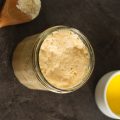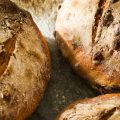Sourdough’s tangy zest makes it popular, but its signature flavor stems from yeast, a living organism. What’s more, bakers sneak in eggs, dairy and butter to alter taste and rise. So can devoted vegans partake in chewy-crisp toast? This guide offers clarity by investigating sourdough’s core components. Read on to discover whether those pursuing plant-based lifestyles can continue enjoying fluffy, flavorful sourdough toast.
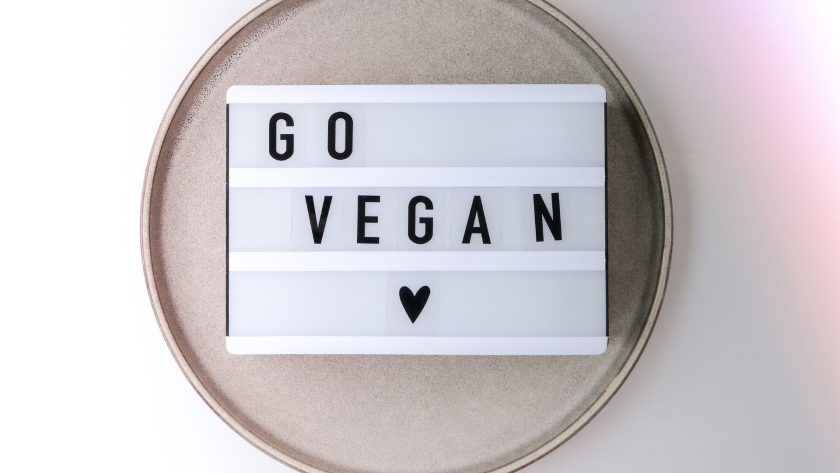
Table of Contents
- Is Sourdough Bread Vegan?
- Is Sourdough Starter Vegan?
- Common Non-Vegan Ingredients in Sourdough and Other Bread
- Identifying Vegan Sourdough: Key Factors to Consider
- DIY Vegan Sourdough
- Sourdough Bread is Vegan in Most Cases But Always Check!
- FAQs
Is Sourdough Bread Vegan?
Sourdough bread is a favorite for sandwich lovers and toast aficionados alike. But its signature sour flavor comes from a substance that gives some vegans pause – fermented yeast. Not to mention, are there additives like butter that make sourdough taste better, but not vegan?
Do these reasons render all sourdough off-limits for vegans? Let’s take a closer look at what goes into this artisanal bread.
Sourdough Starter Contains Yeast
The key ingredient that provides sourdough with its distinctive sour taste is the starter. This blend of flour and water stays sheltered from the open air, allowing the yeast and bacteria naturally present to feed on the starches and sugars. As these microorganisms grow, they produce lactic and acetic acids responsible for the sharp, tangy flavor.
So does the presence of living organisms make sourdough non-vegan? Not necessarily.
Vegans avoid animal products and byproducts. Yeast consists of tiny fungus microbes that feed on sugars, not animal-derived ingredients. There’s nothing non-vegan about yeast itself. The starter contains no dairy, eggs, or other animal substances. As long as bakers use plant-based flours, the starter aligns with veganism.
Traditional Sourdough Relies on Plant-Based Ingredients
Authentic sourdough eschews additives, preservatives, sweeteners, and oils in favor of a simple formula – flour, water, salt, and starter. None of these basic ingredients clash with a vegan diet.
- Flour: Typically wheat-based, but sometimes rye or other gluten-free grains. Always plant-derived. (on that note, I wrote a dedicated blog post on the topic of sourdough being gluten free or not)
- Water: Plain ol’ H20, perfectly vegan.
- Salt: While some breads add butter or milk, sourdough generally uses mineral salt.
- Starter: As discussed above, consists of plant-based flours and water.
With its minimalist plant-powered ingredients, traditionally prepared sourdough aligns with vegan standards.
But bakers sometimes insert additional ingredients that call its vegan status into question…
Potential Non-Vegan Additions to Sourdough
In an effort to alter texture, rise, or flavor, some bakers add enhancements like:
- Eggs: Sometimes used to help lift and leaven dough. Not vegan.
- Honey: For sweeter flavor and browning. Avoid for vegan diets.
- Milk: Added for tenderness; contains dairy.
- Oil: Vegetable oils are fine, but some recipes use butter.
- Yogurt: Imparts tanginess. Dairy-based, so not vegan.
While these ingredients occasionally augment sourdough bread, traditional lean formulas stick to flour, water, salt, and starter. But due to the potential additions above, sourdough’s vegan suitability varies by bakery.
The Takeaway
As long as bakers don’t supplement with animal products, sourdough can fully comply with a vegan diet. Traditional recipes contain solely plant-based ingredients. But it always helps to verify with bakeries or check labels when buying, to guarantee no non-vegan additions.
Is Sourdough Starter Vegan?
A sourdough starter serves as the foundation for those tangy, chewy loaves. But does the starter itself comply with vegan ideals? Let’s unpack what goes into sourdough’s secret weapon.
Sourdough Starter Relies On Simple Ingredients
Fundamentally, a sourdough starter contains two basic components:
- Flour: Typically all-purpose or whole wheat flour. Always derived from plants like wheat, rye, or rice.
- Water: Simply H2O, the most vegan liquid around.
That’s it – flour and water. No eggs, dairy, or other animal products involved in preparing traditional starter.
The starter harnesses wild yeasts and bacteria present in the flour and air. As these microbes feed on sugars in the flour and water mixture, they produce carbon dioxide gas along with lactic and acetic acids. This fermentation process gives starter its airy rise and sour tang.
But are these active yeast cultures vegan? Let’s take a closer look.
Yeast Aligns With The Vegan Lifestyle
Vegans avoid consuming or using animal byproducts out of compassion for creatures. Yeast consists of tiny fungus microbes that create bubbles in bread dough.
Commercial bakers sometimes use processed yeasts from factories. But sourdough relies on yeast naturally occurring in flour. This “wild yeast” harvested from plants suits the vegan creed. It entails no exploitation of animals.
In short, yeast itself contains no animal derivatives – just microorganisms that live on sugary foods like flour. So yeast poses no issues for vegans in terms of ingredients or preparation.
Potential Non-Vegan Contaminants
Bakers sometimes add certain non-vegan elements to alter a starter’s flavor, though not typical:
- Honey: For sweeter notes and better rise
- Milk: Can lend richness while curbing acidity, contains dairy
- Yogurt: Imparts tangy flavor, also contains dairy.
When preparing starter, bakers may also use utensils contaminated by non-vegan foods without proper cleaning:
- Butter Residue: From baking other non-vegan breads
- Egg Wash: Brushed on croissants or other pastries
Thankfully, traditional sourdough starter relies solely on flour, water, and airborne yeast. But vegans should still inquire with bakeries about starter ingredients and preparation methods to guarantee no contact with animal products.
Keeping Home Sourdough Starters Vegan
For the ultimate vegan sourdough, consider making your own starter at home:
- Use plant-based flours like whole wheat or rye.
- Filtered water instead of tap water.
- Store in clean jars away from non-vegan foods.
Then employ this vegan starter to bake ethical, cruelty-free loaves! Transfer to bread recipes also devoid of eggs, dairy, and other animal ingredients.
The Takeaway
With some care and questioning, sourdough starter can fully comply with vegan ideals. This blend of water, flour, and airborne yeast avoids exploitation of animals when prepared properly.
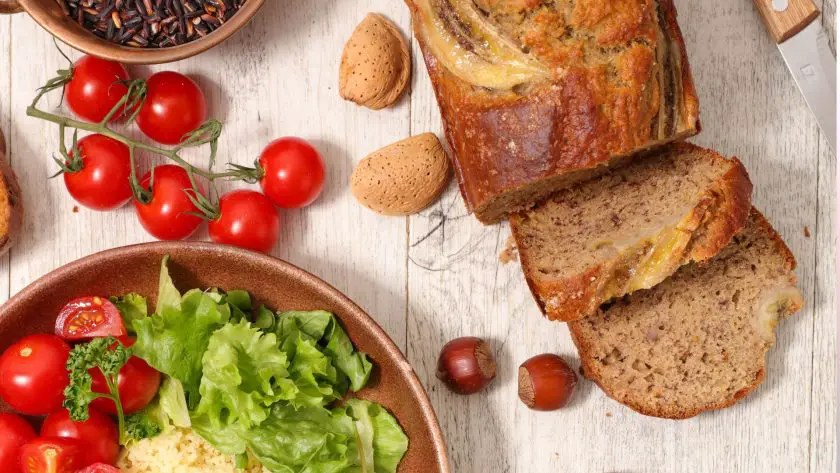
Common Non-Vegan Ingredients in Sourdough and Other Bread
Bread seems deceptively simple, right? Just flour, water, yeast. But bakers often add extra ingredients for texture and flavor that don’t align with vegan diets.
Which animal-derived additives should vegans watch for in sourdough and other breads?
Eggs
Eggs frequently augment bread dough to help:
- Add structure for an airier rise
- Enrich flavor
- Improve moisture retention
- Strengthen gluten networks
- Speed fermentation
Since eggs derive from chickens, they lie outside vegan parameters. Vegans avoid this common bread additive.
Dairy Products
Dairy also enhances dough, providing:
- Tenderness from fat
- Tangy flavors
- Better moisture retention
Some examples include:
- Milk: For a softer crumb texture. Lends subtle sweetness.
- Butter: Rich taste, tender flaky layers. Imparts moisture.
- Cheese: For flavor, color, and decadence. See: fougasse.
- Yogurt: Tangy, tenderizing effects.
Dairy products like milk, yogurt, and butter come from cows or goats. So vegans eschew these animal-based ingredients in bread.
Honey
Some bakeries add a touch of honey to bread dough for:
- Mild floral sweetness
- Food for yeast = better rise
- Browning = attractive crust
- Moistness retention
But honey comes from bees, so vegans avoid it. They opt for plant-based syrups like molasses, agave, or maple syrup instead to sweeten and flavor dough.
Animal-Derived Fats
Beyond butter, some recipes utilize fats like:
- Lard: Pig fat, added for flakiness. See: flaky biscuits.
- Tallow: Beef fat, gives a rich taste.
- Clarified Butter/Ghee: Butterfat without milk solids.
These animal fats imbue dough with heavenly flavor and a tender crumb. But they directly derive from animal slaughter for food purposes. So vegans exclude these fats from their bread recipes.
Bottom Line
Eggs, dairy products, honey and animal fats are common non-vegan ingredients snuck into many bread recipes for texture and taste.
To determine if a bread meets vegan standards, scrutinize the ingredients for any of these sneaky animal additives. Stick to plant fare like fruit, vegetables, grains and vegetable fats or oils.
Identifying Vegan Sourdough: Key Factors to Consider
We’ve covered traditional sourdough’s inherently vegan-friendly nature. But how can you be sure any loaf you buy avoids animal products?
Here are tips for spotting truly vegan sourdough bread:
Examine Ingredient Labels
When assessing a sourdough’s vegan status, first check the ingredients list on packaging:
- Scan for eggs, dairy, honey – These common non-vegan additives can sneak into some sourdough recipes.
- Watch for unfamiliar additions – Things like whey, casein or gelatin indicate hidden animal products.
- Research uncertain items – If any components seem questionable, look them up to discern their origin.
Ideally, the ingredients will contain just the basics like flour, water, salt and starter cultures. No eggs, milk, yogurt or other animal fare.
Seek Out Vegan Labels
Many vegan brands clearly mark their sourdough as “vegan” right on the packaging. Specific vegan certifications also confirm compassionate preparation:
- Certified Vegan Logo – Products awarded Certified Vegan status after inspection.
- V Label – International V-Label for approved vegan goods.
- Animal Welfare Approved – Humane farming certification includes vegan review.
These logos take the guesswork out of selecting cruelty-free sourdough.
Inquire with Bakeries
For fresh-baked loaves at local bakeries that lack definitive labels, ask bakers directly about ingredients and practices:
- Do you use any eggs, dairy or other animal products?
- Could there be cross-contamination from non-vegan preparations?
- What about glazes, washes or finishing touches?
Reputable bakeries should know exactly what goes into their breads.
What If Information Is Unavailable?
Sometimes information gaps make it impossible to guarantee a sourdough’s vegan status. Maybe an artisan baker keeps recipes secret. Or a store-bought loaf lists vague “natural flavors.”
When details are obscured:
- Reach out for more intel from producers.
- Seek clarity before consuming.
- If doubts linger, avoid that bread to stay safely vegan.
In general, traditional sourdough recipes stick to plant ingredients. But with incomplete data, vegans should remain cautiously skeptical to avoid accidentally non-vegan bread.
Connecting with the growing vegan community can help locate ethical eats even in the most secluded regions.
Look Beyond Ingredients Lists
Aside from analyzing components, also consider sourcing ethics for a fully compassionate loaf:
- Were environmentally responsible practices used to grow grains and make bread?
- Do workers receive fair wages through equitable food systems?
Purchasing sustainable, ethical vegan sourdough supports both human and non-human animals. And the planet we all share.
Consider DIY Sourdough
Ultimately, homemade sourdough offers full control over ingredients for vegan purity. Cultivate your own starter from scratch with flour and water. Then bake loaves using vegan recipes without eggs, butter or honey.
While it takes patience, you can’t get more traceable than baking your own compassionate loaves at home.
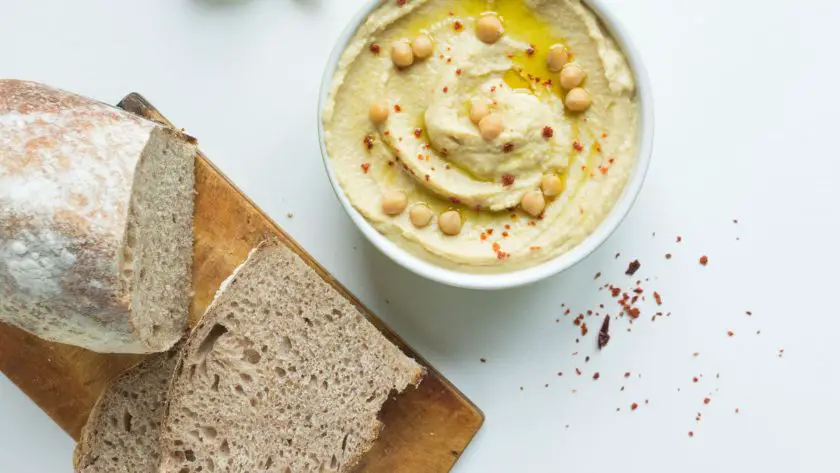
DIY Vegan Sourdough
For the ultimate vegan sourdough, bake it yourself at home! While it takes more effort, you control exactly what goes into homemade loaves.
Keep these tips in mind:
- Make plant-based sourdough starter from scratch
- Use allergy-friendly flours
- Add enhancing fats like coconut oil
- Mix, proof and bake for the perfect vegan loaf
This recipe makes a classic sourdough loaf with a crispy crust and a soft, airy interior.
Ingredients
- 1 cup (240ml) active sourdough starter
- 1 ½ cups (360ml) lukewarm water
- 4 cups (480g) all-purpose flour (plus more for dusting)
- 1 teaspoon (6g) salt
Instructions
- Mixing the Dough:
- In a large bowl, combine the sourdough starter and lukewarm water. Mix well.
- Add the flour and salt to the starter mixture. Mix until a rough dough forms.
- Cover the bowl with a damp cloth and let it rest for 30 minutes.
- Kneading:
- After resting, knead the dough in the bowl for about 5 minutes.
- If the dough is too sticky, add a bit more flour. It should be soft but not overly sticky.
- First Proofing:
- Cover the bowl again and let the dough rise at room temperature for about 8-12 hours, or until it doubles in size.
- Shaping the Loaf:
- Gently deflate the dough and transfer it to a floured surface.
- Shape the dough into a round loaf.
- Place the loaf on a parchment paper-lined baking tray or a well-floured banneton (bread proofing basket).
- Second Proofing:
- Cover the shaped loaf and let it rise for another 1-2 hours, or until it puffs up noticeably.
- Preheat the Oven:
- Preheat the oven to 450°F (230°C).
- If you have a baking stone, place it in the oven to heat up. If not, a regular baking tray will work.
- Scoring and Baking:
- Just before baking, make a few shallow cuts on top of the loaf with a sharp knife. This is called scoring and helps the bread expand in the oven.
- Bake the bread for 35-40 minutes, or until the crust is golden brown and the loaf sounds hollow when tapped on the bottom.
- Cooling:
- Remove the bread from the oven and let it cool on a wire rack for at least an hour before slicing.
Enjoy your homemade vegan sourdough bread as a delicious and satisfying addition to any meal!
Sourdough Bread is Vegan in Most Cases But Always Check!
In summary: thanks to its adherence to elemental components, traditionally prepared sourdough suits vegan lifestyles. With some careful label-reading and ingredient vetting, sandwich lovers need not forgo fluffy ethical toast! Those desiring guaranteed cruelty-free loaves can scout out specialty vegan bakeries or even bake their own plant-powered bread at home.
FAQs
Can Vegans Have Sourdough Bread?
Essentially, traditional sourdough bread is made with three simple ingredients: flour, salt and water. So if the bread is made with these ingredients then it is most definitely vegan friendly.
Why Would Sourdough Not be Vegan?
Sourdough bread may not be vegan if it contains non-vegan ingredients such as honey, dairy products, or eggs, which are sometimes added for flavor or texture.
Is Sourdough Starter Vegan?
Sourdough starter is typically vegan, as it is usually made from just flour and water, ingredients that are plant-based and animal-product free.
Is There Any Dairy in Sourdough Bread?
Most homemade sourdough bread does not have any dairy, as it is commonly made with a sourdough starter which is made up of flour and water.
What Brands of Sourdough Bread are Vegan?
Here are some vegan sourdough bread brands: Berlin Natural Bakery, Eatsane, Bavarian, Rudi’s Organic Bakery, Simple Knead, Young Kobras Original and more.
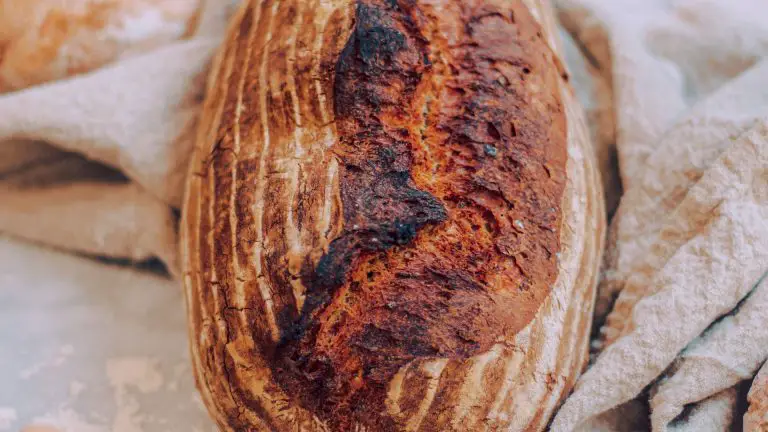
Vegan Sourdough Bread
Enjoy this homemade vegan sourdough bread as a delicious and satisfying addition to any meal!
- Total Time: 15 hrs
- Yield: 1 loaf/12 slices 1x
Ingredients
- 1 cup (240ml) active sourdough starter
- 1 ½ cups (360ml) lukewarm water
- 4 cups (480g) all-purpose flour
- 1 teaspoon (6g) salt
Instructions
- In a large bowl, combine the sourdough starter and lukewarm water. Mix well.
- Add the flour and salt to the starter mixture. Mix until a rough dough forms.
- Cover the bowl with a damp cloth and let it rest for 30 minutes.
- After resting, knead the dough in the bowl for about 5 minutes. If the dough is too sticky, add a bit more flour. It should be soft but not overly sticky.
- Cover the bowl again and let the dough rise at room temperature for about 8-12 hours, or until it doubles in size.
- Gently deflate the dough and transfer it to a floured surface.
- Shape the dough into a round loaf.
- Place the loaf on a parchment paper-lined baking tray or a well-floured banneton.
- Cover the shaped loaf and let it rise for another 1-2 hours, or until it puffs up noticeably.
- Preheat the oven to 450°F (230°C).
- If you have a baking stone, place it in the oven to heat up. If not, a regular baking tray will work.
- Just before baking, make a few shallow cuts on top of the loaf with a sharp knife. This is called scoring and helps the bread expand in the oven.
- Bake the bread for 35-40 minutes, or until the crust is golden brown and the loaf sounds hollow when tapped on the bottom.
- Remove the bread from the oven and let it cool on a wire rack for at least an hour before slicing.
- Prep Time: 14 hrs
- Cook Time: 40 mins
- Category: bread
Nutrition
- Serving Size: 1 slice
- Calories: 160 kcal
- Sodium: 200 mg
- Fat: 0.5 g
- Carbohydrates: 33 g
- Fiber: 2 g
- Protein: 5 g


![[Video] From The Seed To The Peasant Bakery With Nicolas Supiot 105 [video] from the seed to the peasant bakery with nicolas supiot](https://www.mydailysourdoughbread.com/wp-content/uploads/2022/11/image-18-120x120.jpeg)
